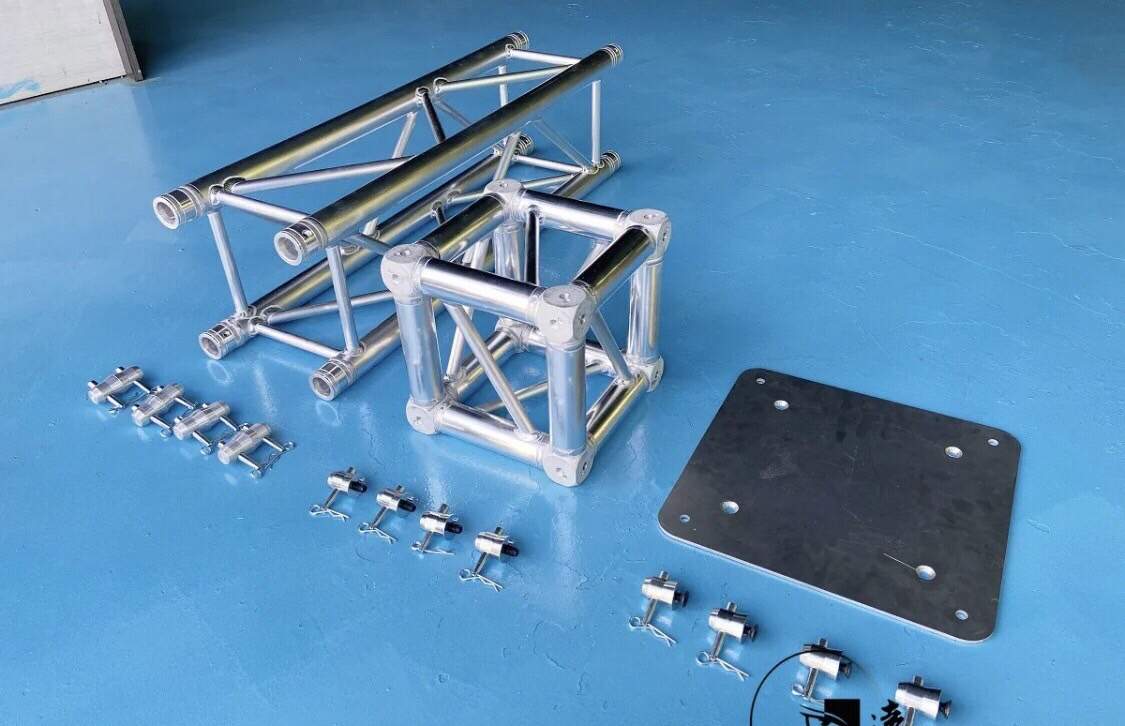
Publish Time: 2023-09-13 Origin: Site

Introduction:
Event Structures Trusses are known for their durability and longevity when handled and maintained correctly. Whether you're using trusses in the entertainment industry or any other field, regular inspection and maintenance are crucial for ensuring their safe and efficient operation. In this article, we'll delve into the importance of proper truss inspection and maintenance and explore the ANSI Entertainment Technology Standard A1.2, which sets guidelines for truss inspection.
Importance of Inspection:
Properly inspecting your trusses is not just a recommendation; it's a vital step in ensuring their safe working condition every time they are used. The ANSI Entertainment Technology Standard A1.2, developed by the Entertainment Services and Technology Association's Technical Standard Program, outlines the minimum required inspection routines and guidelines for truss inspection. This standard can be downloaded from the ESTA website.
Types of Inspections:
The ANSI E1.2 standard defines three types of truss inspections:
Initial Inspection: This is required when a truss is acquired, whether it's purchased new from the manufacturer or obtained as used. Detailed records must be kept and maintained for as long as the truss is in the owner's possession.
Frequent Inspection: These are visual inspections to be conducted before each use and immediately after any incident that may have caused damage to the truss. Unlike initial inspections, records are not required for frequent inspections.
Periodic Inspection: These are annual visual inspections, with dated records to be kept on file. Periodic inspections are more thorough and should be conducted by a competent person.
What to Inspect:
During initial and frequent inspections, the following items should be inspected:
Geometry of the truss for twisting, racking, bending, sweep, or camber.
Truss members for dents, bends, abrasions, or missing members.
Trust connections for flatness or deformation.
Fastening hardware for proper grade, declamation, or excessive wear.
Welds for breaks, cracks, or deformation.
Non-Destructive Testing:
If any weld is suspected to be defective during inspection, additional non-destructive testing, such as dye penetrant testing, should be performed by a qualified person.
Criteria for Removing from Service:
It's crucial to know what constitutes damage that warrants removing the truss from service. Extreme Structures recommends the following criteria:
Material loss due to abrasion or other factors should not exceed 25% of the wall thickness of the damaged member.
Any sign of dents, holes, cuts, bent members, cracked or broken welds, corrosion, or excessive wear around connections warrants removal from service.
Repairs:
Repairs to damaged trusses should be made according to the manufacturer's recommendations by a qualified person. Weld repairs, in particular, should be performed by an AWS certified welder.
Conclusion:
Properly inspecting and maintaining trusses is paramount to maintaining a safe working environment around structural components. By adhering to the ANSI Entertainment Technology Standard A1.2 and manufacturer guidelines, you can ensure the longevity and safety of your Extreme Structures Trusses, allowing them to perform reliably for years to come.
FOSHAN DRAGON STAGE
No.7,Xiaxi Industrial Area,Heshun,Nanhai District,Foshan,528241,Guangdong,China.
+86 136 3132 8997
